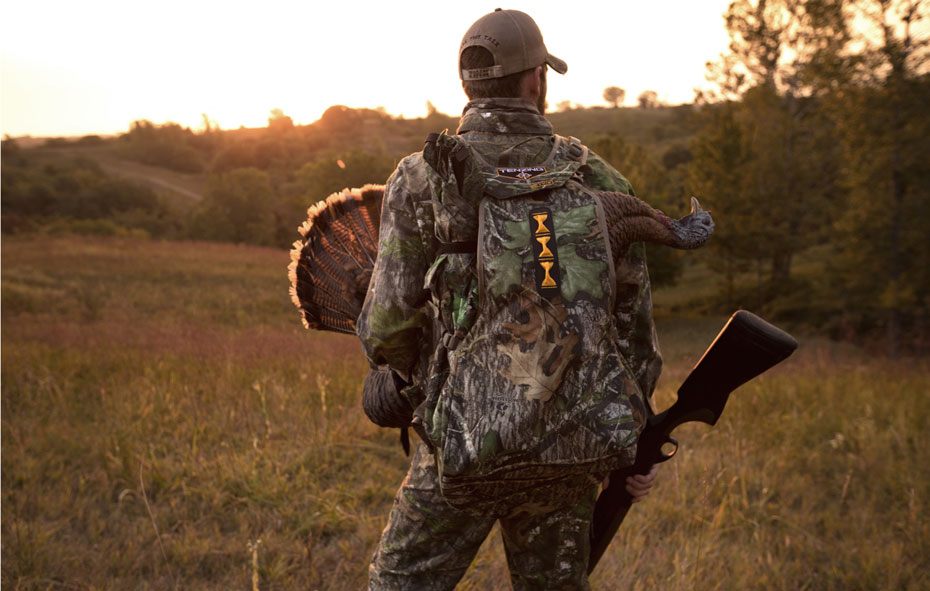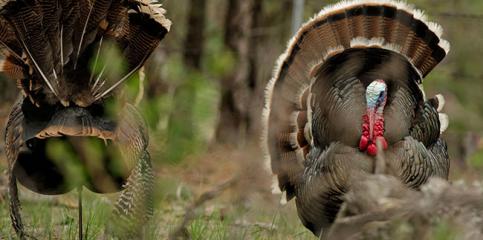Heath Wood

As hunters, we strive to have fun and be successful while in the field. To some that may be as simple as being in God’s Great Outdoors and having fun doing what they love. To others it is more about outsmarting an animal and beating it at its own game by knowing what move they are going to make next. Webster’s Dictionary defines success as a favorable or desired outcome.
Over the years, I have learned that to be successful at calling, using decoys, and most importantly, making a successful shot, one must be prepared in order for all of those things to fall into place.
Scouting
Do Your Homework
Whether you’re deer hunting, elk hunting, turkey hunting or fishing, scouting always increases the odds of success. The first part of scouting begins several months before the season. This can be accomplished by finding scratchings in the leaves where turkeys have been feeding, discovering tracks where turkeys have been or tracks combined with strut marks, which will tell where strut zones are.
Another tactic is finding droppings; this can show if gobblers or hens are in the area. A gobbler’s droppings will be long and J-shaped and a hen’s will be more like a popcorn kernel.
Another great way to scout is by glassing with binoculars from a distance. This will help determine where gobblers are throughout the day and can also be used to establish where turkeys roost. You can also tell what stage of the breeding process they are in by seeing if gobblers are fighting for dominance or if they are instead pursuing and breeding hens.
Listen
The second stage of scouting begins as much as a month before season, and it is done by listening to toms gobble. Several weeks before season, I begin each morning by listening for gobbling. I will usually start from a high point, never leaving the truck. I will spend an hour not making a sound except for an occasional call from an owl hooter and listen to the natural sounds of gobbling. This is a great way to determine how many toms versus how many jakes are in the area. It’s also a great way to hear what stage of the breeding season toms are in by hearing if toms are gobbling at each other to determine dominance. If they are gobbling at hens, make sure to listen and see if hens are answering back. The sound of a gobbling tom is not only fun to listen to while sipping on a hot cup of coffee from the truck, it is also a great scouting tool if hunters will make mental notes as to what they are hearing.
Listening can also determine where turkeys go every morning. By the time turkey season rolls around, hunters will know exactly what turkeys are going to do before it happens.
Patterning a Shotgun or Shooting a Bow
One of the most important parts of being prepared for turkey season is knowing how your weapon of choice performs in every situation. Many hunters will shoot their gun one or two times then head to the field, only to face a situation where they missed a gobbler due to not knowing how their gun or bow performs. I strongly suggest shooting a shotgun multiple times at several different distances, with different types of loads. Every gun handles ammunition differently, and by knowing this ahead of time, it eliminates the risk of injured turkeys which in turn makes for a better success rate for the hunter. Hunters don’t want to spend several hours scouting if they end up at the finish line with a missed opportunity.
The same goes for archery hunters. It takes hours of shooting practice at different yardage, sitting, standing, and different angles to be prepared for any situation that might occur while in the field hunting.
Many say, “I love it when a plan comes together.” I once thought luck played a huge role in success when turkey hunting. Even though I welcome all the luck I can get, I have found that once I began putting the time and effort into scouting and preparing for the season, the plan of harvesting mature toms seems to fall into place much better than relying on luck to show up.



























